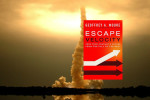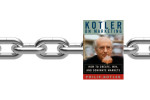The Halo Effect

There is an overabundance of theories to explain the performance of companies. However, what makes one company a winner is often what makes another company a loser. A variety of cognitive biases are found in literature attempting to identify drivers of corporate performance.
The Halo Effect: … and the Eight Other Business Delusions That Deceive Managers by Phil Rosenzweig
Business and management books identifying the ingredients to management and business performance line the shelves of bookstores. The Halo Effect: … and the Eight Other Business Delusions That Deceive Managers challenges the entire body of literature which claims to illuminate the “physics of business” and explain formulas for success. Author Phil Rosenzweig spends much of the book dissecting business classics such as Good To Great and In Search of Excellence and showing the various fallacies of reasoning contained within them. He also emphasizes that the same factors, such as customer focus, which are heralded as key ingredients to success when financial performance is positive, instantly flip to being evaluated as negative or blind spots when financial performance dips.
Tracing the explanatory stories of corporate success, Rosenzweig finds that the reasons cited for high performance are commonly used to explain the failure of the same company. He uses Cisco and ABB as examples of companies whose rise and fall were attributed by the media to the same factors. Cisco’s acquisition strategy was initially evaluated as shrewd and strategic, but eventually labeled as haphazard and irresponsible. Cisco’s “focus on the core” similarly flip-flopped as a virtue and vice. Likewise, ABB’s rise to fame was chronicled through the lens of bold and daring moves. However, once the company was in trouble, it was labeled as brash and irresponsible.
The title of the book refers to a predisposition we have to creating holistic explanations that reduce cognitive dissonance by providing a cohesive story. Our minds want to simplify by association so there is a tendency to ascribe all-round goodness after finding a single good attribute. The authors point out that George Bush’s approval rating for handling the economy increased immediately after the September 11 attacks in conjunction with his overall approval rating, when there was no relationship between the two events.
There is also a tendency to ascribe positive ratings to a process if the outcome of that process is deemed positive regardless of the constituent parts of that process. Likewise, leadership is most susceptible to the Halo Effect, but studies have found that there is no clear set of leadership attributes that win in every case. Performance (i.e., outcomes) are the only way to judge effectiveness.
So many of the things we…think commonly contribute to company performance are often attributions based on company performance.
The Halo Effect takes place when, for example, a financially successful company is voted a “best place to work”. If it was unsuccessful financially, would it still be a “best place”? The two variables are most likely related so a positive rating of one will affect the other.
Rosenzweig also lists eight other “delusions” that obscure what he believes to be the truth about corporate performance: nobody can predict with certainty whether any company will be successful; all theories of success are based on evaluating past performance. Here’s a sample:
- The delusion of correlation and causality is one in which not only is it difficult to tell whether factors are actually related, but it’s not clear which factor is the cause and which is the effect. At financially successful companies, employees are more likely to respond positively to questions about corporate culture so it’s not clear that strong corporate culture causes successful financial performance.
- The delusion of a single explanation states that single factors like strong corporate culture or diversification cannot explain business success because nearly all business success factors are related. There are too many factors at play within companies that it is very difficult to isolate a set which cause overall success.
- Selecting a set of winning companies and attempting to determine what they have in common is the delusion of connecting the dots because the successful companies are not compared with less successful ones to see if what the successful ones did is actually different than what the unsuccessful ones did.
- Because nearly all companies experience losses and decline over time, believing in unstoppable momentum is called the delusion of lasting success.
- Since companies can improve their individual performance, but fall behind their rivals at the same time, the delusion of absolute performance is important to consider.
- Selecting a strategy that many successful companies employ, such as focus, and then assuming that focus will guarantee success is the delusion of the wrong end of the stick.
- Many authors believe they have discovered immutable laws of business that are as predictable as the laws of physics, but Rosenzweig doesn’t agree and he terms this the delusion of organizational physics. It’s not possible to put companies in controlled laboratory environments and observe their performance unaffected by any outside forces.
Much of Rosenzweig’s argument boils down to the dynamics of what drives success in capitalism: innovation. This constant flow of new ideas, products, and services creates an unstable environment which tends to pull even the most successful companies back towards the mean. Adding to the confusion are the actions of competitors, which are difficult to factor out in any analysis. The central myth this book exposes is the idea that a company can be successful if it simply follows a formulaic set of strategies.
Rosenzweig concludes by noting that strategy and execution are both fraught with risk and uncertainty and good manager use this reality as their foundation. He doesn’t offer any antidote to the various theories in the books he critiques but does suggest that a strong strategic vision and specific execution tactics will win over the long term. The book ends with the rallying cry: “persistence and tenacity are everything.”
[youtube=https://www.youtube.com/watch?v=gBHXWpXCVmg]







